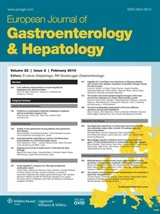 Patients with symptomatic functional dyspepsia (a disorder of digestive function characterised by discomfort or heartburn or nausea) are more likely than people free of this condition to exhibit increased somatisation (conversion of an emotional, mental, or psychosocial problem to a physical complaint), more stressful life events, less belief in religion, and drink less tea , suggests the article out in the European Journal of Gastroenterology and Hepatology.
Patients with symptomatic functional dyspepsia (a disorder of digestive function characterised by discomfort or heartburn or nausea) are more likely than people free of this condition to exhibit increased somatisation (conversion of an emotional, mental, or psychosocial problem to a physical complaint), more stressful life events, less belief in religion, and drink less tea , suggests the article out in the European Journal of Gastroenterology and Hepatology.
The lead researchers say that this pattern of findings support a less reductionist approach and favours the strategy that includes considering the patient from a holistic view point.
The findings of the study suggest the importance of adopting a more comprehensive holistic bio-psycho-socio-spiritual model when dealing with functional dyspepsia patients.
The researchers identified factors associated with dyspeptic symptoms by comparing demographic and psychosocial features in individuals exhibiting reddish streaks in the stomach, of whom 93 were symptomatic for functional dyspepsia and 67 asymptomatic.
The two groups did not differ with regard to smoking behavior, alcohol consumption, and coffee intake, but symptomatic patients were significantly less likely to drink tea than their asymptomatic peers, at 37.6% versus 61.2%.
Other differences included that symptomatic patients were more likely than asymptomatic patients to be single (20% vs 6%), had less belief in religion (46% vs 66%), experienced a greater number of stressful life events (median of 3.0 vs 2.0) and more severe stressful life events (1.5 vs 1.0).
Symptomatic patients also had greater scores for somatisation, depression, anxiety, and psychotism and general severity index of psychopathology compared with asymptomatic patients.
What about Helicobacter Pylori?
The prevalence of Helicobacter pylori in the patients was just 21%, which is lower than the mean prevalence of 54% for the general population, and there was no association between infection with the pathogen and dyspeptic symptoms and so excludes one of the common pathogen explanations.
Understanding the characteristics of functional dyspepsia will provide a rationale for the clinician to explain the meaning of the symptoms and to achieve better management.
Conclusion: FD with gastric reddish streaks exhibited increased somatisation, more stressful life events, less belief in religion, and less tea consumption as compared with asymptomatic counterparts. The findings of the study suggest the importance of adopting a more comprehensive holistic bio-psycho-socio-spiritual model when dealing with FD patients.
Comment: In natural or non allopathic medicine, some reductionists criticise the term holism and dismiss the idea that a patient is any more than the sum of a number of often disparate symptoms. This article is interesting in that the treatment strategy recogises that the complaint is also managed by a number of social and lifestyle factors that when taken in context with the patient is the optimal approach to resolution.
Reference:
Chen TS, Luo JC, Chang FY. Psychosocial-spiritual factors in patients with functional dyspepsia: a comparative study with normal individuals having the same endoscopic features. Eur J Gastroenterol Hepatol. 2010 Jan;22(1):75-80 View Abstract




